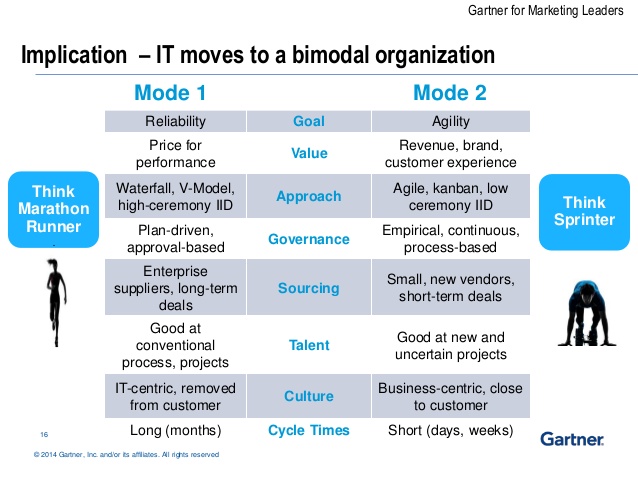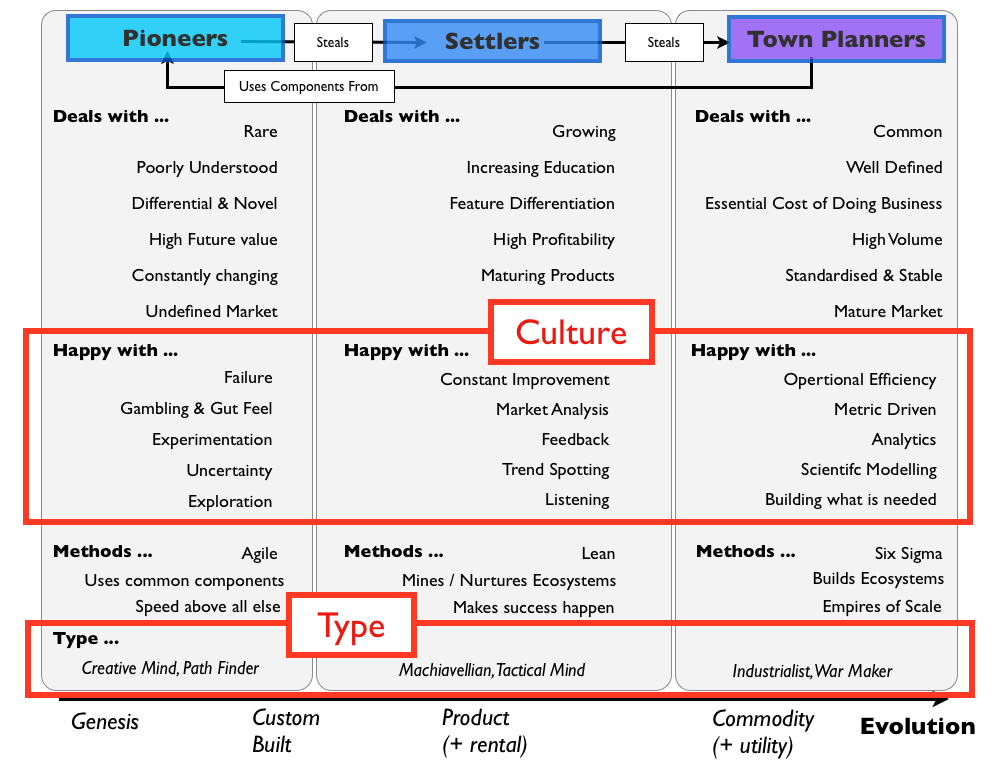Gartner is advertising “bi-modal”; a “new” way to drive operations and new activities of a corporation. I was reading the idea and the concepts around it and I found it “old” idea, with some propositions that are so nice to have, and that they can be defended on the paper, but that in the reality of the companies (where there are real people and real egos) I find difficult to implement.
 Review the basis of organizations behavior before to accept the “bi-modal” proposition. On this topic Simon Wardley defines here three attitudes, cultures and type of people: pioneers, settlers and town planners (the main “modes”), which impacts the way the organization mainly behaves.
Review the basis of organizations behavior before to accept the “bi-modal” proposition. On this topic Simon Wardley defines here three attitudes, cultures and type of people: pioneers, settlers and town planners (the main “modes”), which impacts the way the organization mainly behaves.
- Pioneers → develop novel concepts.
- Settlers → create great products.
- Town Planners → create highly industrialized commodity and utility services.
 Not all combinations are possible, and that in some cases you have to give up some of the “modes” to do not be in the “middle of everything”:
Not all combinations are possible, and that in some cases you have to give up some of the “modes” to do not be in the “middle of everything”:
- DON’T try and break into Pioneers and Town Planners. These two groups are far apart. You’ll create a them vs us culture. None of the novel concepts will ever be industrialized because the Pioneers won’t develop them enough and the Town Planners will refuse to accept them for being underdeveloped. Both groups feel they are the most important and both ridicules the other.
- DON’T bury your Settlers into one of these groups. They won’t feel welcome, they will be in conflict with the group becoming second class citizens. Put them in the Pioneer group and they’ll be denigrated to documenting the “glorious” inventions of others and fighting a losing battle over user needs. Stick them with Town Planners and they’ll be seen as ‘lightweights’, the people whose job it is to deal with those annoying Pioneers and document what they’ve done etc.
Then, what is new in bi-modal model?
My notes:
- IT industry is full of marketing concepts, which need to be evaluated and understood.
- Ideas are easy to defend on the paper, but it’s different to put in place with people. When talking about organizational transformations and changes, the risk are high.